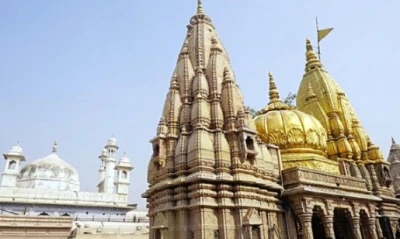In crucial development, the Archaeological Survey of India or ASI survey on Gyanvapi structure has revealed about the existence of a temple. The Hindu place of worship, complete with 34 inscriptions in multiple languages, was remodelled into a mosque, informed women petitioners’ lawyer Vishnu Jain while reading the hard copy of the survey report.
Key Points In ASI Survey Report
- The central chamber and main entrance have a pre-existing structure.
- There exist a well next to the corridor.
- All pillars and plasters were part of the temple.
- Thirty four inscriptions of Hindu temple were found.
- Inscriptions are in Devnagri, Granth, Kannada and Telugu.
- Inscriptions mentioned names of Janaradana, Rudra and Umeshwara deities.
- Terms like Maha Mukti Mandap are mentioned in inscriptions.
- Pillars from an earlier temple were reused while making cellars.
After the Ayodhya Ram Janambhoomi issue, Gyanvapi is one among numerous temple-mosque disputes that spread in Bharat.
Submitted a month ago in a sealed cover, the ASI survey report was dispensed days after the Ayodhya temple’s mega consecration ceremony led by Prime Minister Narendra Modi.
Owing to the sensitivity of the matter, Jain had previously declined to make the report public to avoid any distortion and spread of misinformation on social media adding petitioners will ask for an ASI survey of Wazukhana.
The ASI had been surveying the Gyanvapi mosque premises since August 4 last year except for the Wazukhana area sealed by the order of the Supreme Court.
After the Hindu side asserted the mosque has been constructed over a temple and demanded the right to worship, now the report is significant to the decision in the case.

















